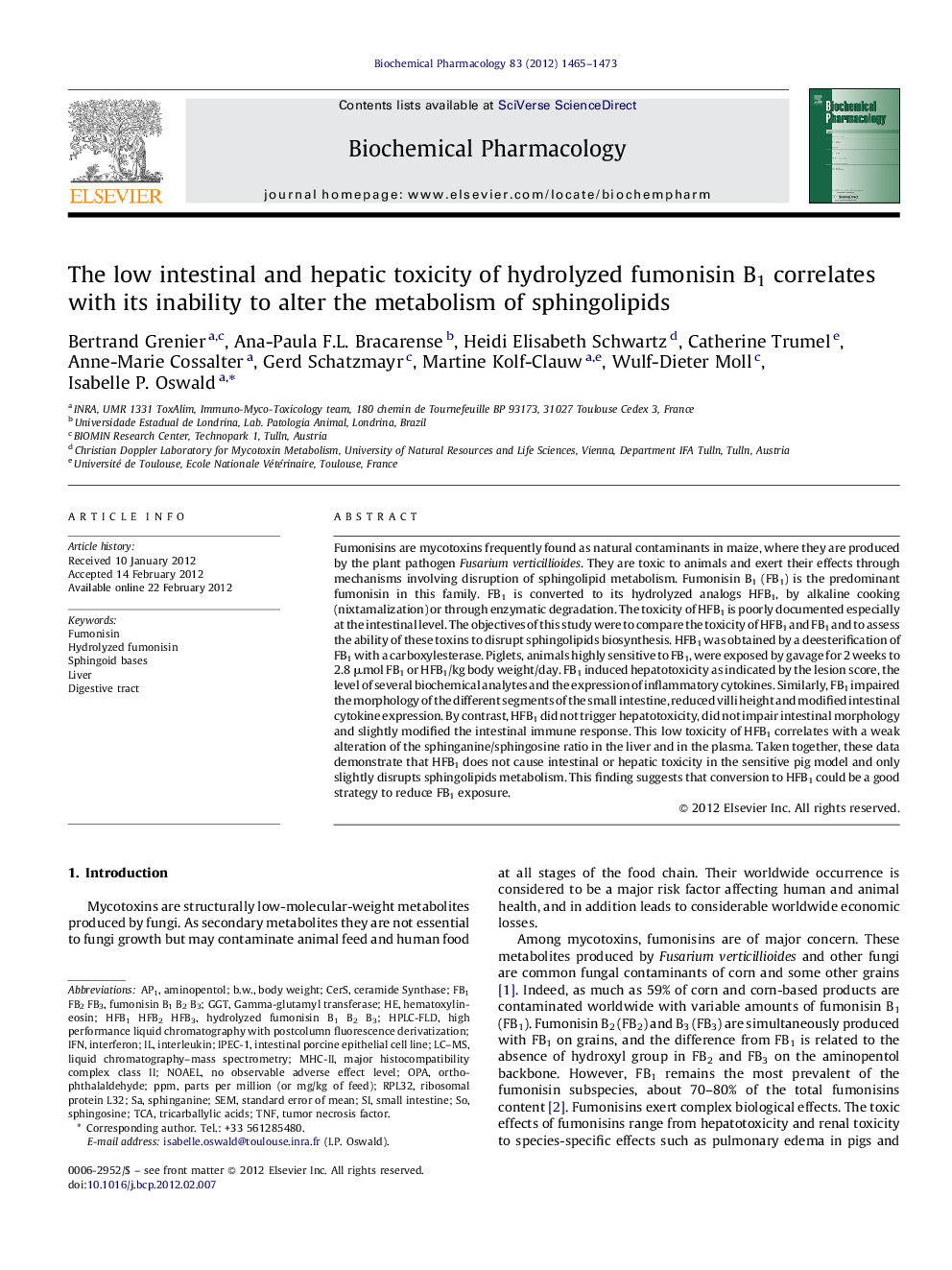| Article ID | Journal | Published Year | Pages | File Type |
|---|---|---|---|---|
| 5823945 | Biochemical Pharmacology | 2012 | 9 Pages |
Abstract
Fumonisins are mycotoxins frequently found as natural contaminants in maize, where they are produced by the plant pathogen Fusarium verticillioides. They are toxic to animals and exert their effects through mechanisms involving disruption of sphingolipid metabolism. Fumonisin B1 (FB1) is the predominant fumonisin in this family. FB1 is converted to its hydrolyzed analogs HFB1, by alkaline cooking (nixtamalization) or through enzymatic degradation. The toxicity of HFB1 is poorly documented especially at the intestinal level. The objectives of this study were to compare the toxicity of HFB1 and FB1 and to assess the ability of these toxins to disrupt sphingolipids biosynthesis. HFB1 was obtained by a deesterification of FB1 with a carboxylesterase. Piglets, animals highly sensitive to FB1, were exposed by gavage for 2 weeks to 2.8 μmol FB1 or HFB1/kg body weight/day. FB1 induced hepatotoxicity as indicated by the lesion score, the level of several biochemical analytes and the expression of inflammatory cytokines. Similarly, FB1 impaired the morphology of the different segments of the small intestine, reduced villi height and modified intestinal cytokine expression. By contrast, HFB1 did not trigger hepatotoxicity, did not impair intestinal morphology and slightly modified the intestinal immune response. This low toxicity of HFB1 correlates with a weak alteration of the sphinganine/sphingosine ratio in the liver and in the plasma. Taken together, these data demonstrate that HFB1 does not cause intestinal or hepatic toxicity in the sensitive pig model and only slightly disrupts sphingolipids metabolism. This finding suggests that conversion to HFB1 could be a good strategy to reduce FB1 exposure.
Keywords
ppmMHC-IIAP1NOAELFumonisinHPLC-FLDb.w.CerSOPAIPEC-1TCASphingoid basesrpl32TNFGGTLC–MSaminopentolOrtho-phthalaldehydesphinganinesphingosineinterferonIFNinterleukinstandard error of meanDigestive tractSmall intestineceramide synthaseliquid chromatography–mass spectrometrytumor necrosis factorSEMhematoxylin-eosinno observable adverse effect levelbody weightribosomal protein L32LiverMajor histocompatibility complex class IIGamma-glutamyl transferase
Related Topics
Health Sciences
Pharmacology, Toxicology and Pharmaceutical Science
Pharmacology
Authors
Bertrand Grenier, Ana-Paula F.L. Bracarense, Heidi Elisabeth Schwartz, Catherine Trumel, Anne-Marie Cossalter, Gerd Schatzmayr, Martine Kolf-Clauw, Wulf-Dieter Moll, Isabelle P. Oswald,
